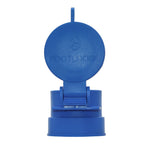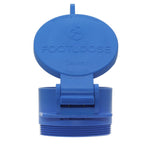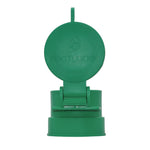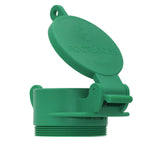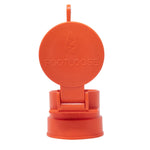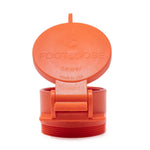You have no items in your shopping cart.
A manhole provides convenient access to sewer and plumbing systems for maintenance and repair. One of the most important maintenance chores is the winterization of these systems to prevent potentially irreparable damage and flooding that can result from damaged or burst pipes. If you manage or own a commercial, industrial, or residential RV property with a plastic or concrete manhole.
What is winterization?
Winterization involves entering plastic or concrete manhole covers and using special equipment to remove all the water from the pipes. Without taking this step before temperatures freeze in your area, the water within the pipes will expand, which will seriously damage the sewer or plumbing system. Even leaving just a small amount of moisture can cause hazardous ice accumulation.
Winterization is also an important aspect of sanitation for onsite sewer systems. If the material within these pipes freezes, the bacteria and viruses that live in human waste will survive until the first thaw, potentially fostering the spread of these contaminants. This becomes a particular problem if the pipes do burst and create a flood, particularly in public-facing facilities such as RV campgrounds where sanitation is of the utmost importance.
How does the winterization process work?
Different manhole types require specialized winterization depending on the purpose of a manhole in the location and other factors. Some manhole components allow you or your service technician to access the sewer system without entering the underground space, which can potentially contain harmful gas accumulation.
Depending on the type of manhole, you will open the cover to turn off the water main valve to your system. Next, open the drain valve, which allows all the moisture to drain from the pipes. You can facilitate this process by flushing all the toilets and turning on all the sinks connected to that water main. The sinks will stop running when the feed lines to the water main have been completely drained.
Larger facilities are often equipped with either antifreeze or air purge system to winterize these types of manholes.

With the latter method, an integrated onboard air compressor or external air compressor uses air pressure to completely dry out the inside of pipes, hoses, lines, and water pumps. Antifreeze winterization uses a similar method with liquid antifreeze, which also coats the inside of the manhole components to provide additional insulation.
A special form of "pink" liquid antifreeze used in an equal ratio with water offers effective winterization well below freezing temperatures. Use the lowest setting possible to prevent system damage.
When the pipes are fully dry, it's time to close the plastic or concrete manhole cover for the winter. Each manhole type features a locking mechanism to keep it secure. Some system components benefit from a heated shroud for added protection against the cold. Fixing leaky pipes and fixtures before you start the winterization process provides an additional shield against freezing.
When should we plan manhole winterization?

Winterize any equipment and systems not currently in use when near-freezing temperatures are in the forecast. Ideally, complete this process well before the cold weather arrives in case of a surprise frost. Signs that a septic or plumbing system has already frozen include water that runs slow and sewage or water backing up into sinks and fixtures.
Winterization is particularly important in seasons with very cold temperatures but little snowfall.
Areas that get lots of snow find that the white cover acts as insulation for the underground sewer and manhole components.
The right manhole cover offers safe, comprehensive access to sewer and plumbing systems while preventing vandalism, tampering, and unauthorized entry. To learn more about the various types of manholes reach out to the team at Enviro Design Products. We look forward to helping you find the best type of manhole for your facility.



